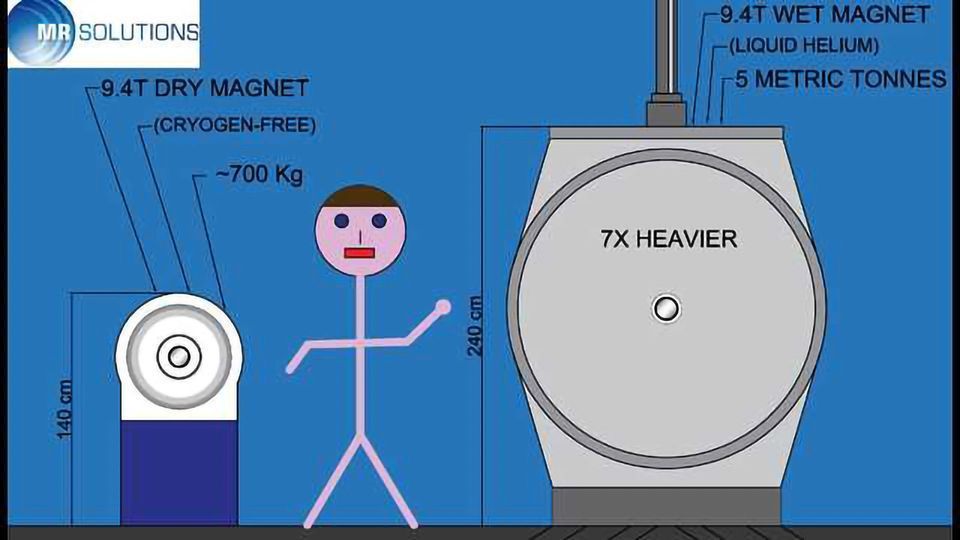MR Solutions’ New 9.4T Dry Magnet MRI System is Seven Times Lighter Than Normal Magnet

Complete the form below to unlock access to ALL audio articles.
When it comes to choosing a preclinical MRI imaging system there is no need to compromise – MR Solutions’ 9.4T cryogen free, or dry magnet system provides state of the art high resolution imaging within a compact footprint. This is often crucial as many research laboratories have very limited space.
The old wet magnet technology is very large and weighs in at around 5 metric tonnes which demands floor reinforcement against 700 Kg for the newer dry magnet technology. This allows laboratories who have limited space to accommodate these very powerful scanners.
It’s not just size and weight. Firstly the area required to accommodate MR Solution’s 9.4T MRI system is around 8m2 to be comfortable, although it could fit within a 4m2 room on any floor compared with 15-20m2 (for a wet magnet system). It can be placed near other imaging equipment because it has a very small stray magnetic field. There is no need for costly helium top-ups as it is a dry magnet system. The cost of the MR system is much lower at around a third of the older wet magnet system.
Wet magnet MRI systems require extensive and costly building modifications to accommodate the weight, size, and height but also the quench lines, water supplies, pipework, and ventilation. They need to be sited in a dedicated room with a Faraday cage built into the walls to screen the signals generated by the scanner from interference. The Faraday cage in the MR Solutions’ scanner is built into the cover.
MR Solutions has recently installed a 3T preclinical MRI imaging system at the Norlux Neuro-Oncology Laboratory, part of the Luxembourg Institute of Health. Dr Olivier Keunen who is responsible for the In vivo imaging facility - Head of Support Service Unit, said: “The size of our animal facility would not have allowed installation of a larger preclinical MRI system. Because of uncertainties about Institute buildings, the system had to be installed in a temporary location. Provision and plans are made for a move of the system to its final location when ready. The cryogen-free cooling and the avoidance of quenching pipes are expected to facilitate the transition.”

